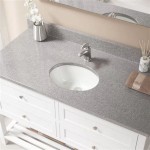Can You Use Ceiling Paint In Bathroom? Understanding Paint Choices for Humid Environments
The question of whether ceiling paint can be used in a bathroom is frequently encountered by homeowners and painting professionals alike. While seemingly straightforward, the answer requires a nuanced understanding of the different types of paint available, their specific properties, and the unique environmental conditions prevalent in bathrooms. Using the wrong type of paint in a bathroom can lead to premature paint failure, fostering mold growth, and ultimately requiring costly repairs.
Ceiling paint, typically formulated for use on interior ceilings, often prioritizes properties such as minimal splatter and a flat, matte finish to minimize imperfections and glare. Bathroom environments, conversely, present a unique set of challenges due to high humidity levels and frequent temperature fluctuations. The selection of an appropriate paint for a bathroom ceiling, therefore, necessitates careful consideration of these factors.
The primary concern in a bathroom is moisture. Showers and baths generate significant amounts of steam, which condenses on surfaces, including the ceiling. This constant exposure to moisture can weaken the paint film, leading to blistering, peeling, and the growth of mold and mildew. Therefore, any paint used in a bathroom must possess excellent moisture resistance and be able to withstand these challenging conditions.
Understanding the Properties of Ceiling Paint
Ceiling paint is specifically designed with certain characteristics in mind, optimized for use on horizontal surfaces subjected to minimal direct contact. One key feature is its viscosity: ceiling paint is often thicker than wall paint. This increased viscosity helps to prevent dripping and spattering during application, minimizing the mess associated with painting overhead. It also tends to have a slower drying time, allowing for more even coverage and reducing the likelihood of lap marks.
Another crucial characteristic of ceiling paint is its finish. Most ceiling paints come with a flat or matte finish. The flat finish is highly effective at concealing imperfections on the ceiling surface, such as minor dents, cracks, or uneven textures. It achieves this by diffusing light and reducing glare. This is particularly advantageous in rooms with ample natural light, as it prevents the ceiling from becoming a distracting focal point. Generally, ceiling paints are not formulated for scrubbability, as ceilings are not typically subjected to the same amount of wear and tear as walls.
The composition of ceiling paint often differs from that of wall paint, particularly in terms of resin type and pigment loading. Some ceiling paints focus on providing maximum hiding power, requiring fewer coats to achieve full coverage. While this can save time and effort during application, it might not necessarily translate to durability or resistance to moisture.
Identifying Bathroom-Specific Paint Needs
Bathrooms present a harsh environment for painted surfaces. The combination of high humidity, fluctuating temperatures, and potential for water splashes necessitates a paint that can withstand these conditions without deteriorating. The primary requirement for bathroom paint is moisture resistance. The paint must be able to prevent water from penetrating the paint film and reaching the underlying substrate. This is crucial to prevent blistering, peeling, and the growth of mold and mildew.
Mold and mildew are common problems in bathrooms because they thrive in damp, poorly ventilated environments. The ideal bathroom paint should contain mildewcides, which are chemical additives that inhibit the growth of these fungi. These additives help to protect the paint film and maintain a cleaner, healthier environment. While regular cleaning and ventilation are also essential for preventing mold and mildew, the use of a paint with mildewcidal properties provides an extra layer of protection.
Scrubbability is another important consideration for bathroom paint. While ceilings are not typically subjected to the same level of scrubbing as walls, they can still accumulate dust, dirt, and condensation stains. A paint that can withstand frequent cleaning without losing its color or sheen is essential for maintaining a fresh, clean appearance. Paints with a higher sheen level, such as eggshell or satin, are generally more scrubbable than flat paints.
Suitable Paint Options for Bathroom Ceilings
Given the specific challenges presented by bathroom environments, it is generally not recommended to use standard ceiling paint on bathroom ceilings. The lack of moisture resistance and mildew resistance in typical ceiling paint formulations makes them prone to failure in humid conditions. Instead, it is advisable to choose a paint specifically formulated for use in bathrooms or other high-moisture areas.
One popular option is mold and mildew-resistant paint. These paints are specifically designed to inhibit the growth of fungi and are available in various finishes, including matte, eggshell, and satin. The addition of mildewcides provides an extra layer of protection against mold and mildew, helping to maintain a cleaner, healthier environment. Many of these paints also offer excellent moisture resistance and scrubbability.
Another viable option is a high-quality acrylic latex paint with a satin or semi-gloss finish. Acrylic latex paints are known for their durability, moisture resistance, and ease of application. The higher sheen levels of satin and semi-gloss finishes make them more scrubbable than flat paints, allowing for easy removal of dirt and stains. It is important to ensure that the chosen acrylic latex paint is specifically labeled for use in bathrooms or other high-moisture areas. Look for paints that contain mildewcides and are designed to withstand frequent cleaning.
Primer also plays a crucial role in protecting bathroom ceilings. Before applying any paint, it is essential to prime the surface with a moisture-resistant primer. The primer seals the surface, preventing moisture from penetrating the underlying substrate and creating a barrier against mold and mildew. A high-quality primer will also improve the adhesion of the paint, ensuring that it lasts longer and provides better protection.
Epoxy paints, while more expensive and requiring more careful application, are also an option for bathroom ceilings, particularly in commercial or high-use settings. Epoxy paints create a very durable, waterproof barrier that is highly resistant to moisture, chemicals, and abrasion. However, epoxy paints can be more difficult to apply and may require specialized equipment.
Proper ventilation is a crucial aspect of maintaining a healthy bathroom environment and prolonging the life of the paint. Ensure that the bathroom is adequately ventilated by using an exhaust fan during and after showers or baths. This will help to remove moisture from the air and prevent condensation from building up on surfaces. Regularly cleaning the bathroom ceiling with a mild detergent solution will also help to remove dirt, dust, and mildew, keeping the paint looking fresh and clean.
In summary, while standard ceiling paint is designed for minimizing glare and hiding imperfections in dry, low-traffic areas, it typically lacks the properties necessary to withstand the humid environment of a bathroom. Choosing a paint specifically formulated for bathrooms, along with proper ventilation and routine cleaning, are essential for ensuring a long-lasting and aesthetically pleasing finish on bathroom ceilings.

Ceiling Paint For Bathroom Prestige Painting Gta

Painting A Bathroom Ceiling

Ceiling Paint For Bathroom Home Painters Toronto

Best Paint For Steamy Bathroom Ceiling Eco Inc

Best Paint For Steamy Bathroom Ceiling Eco Inc

How To Choose The Right Type Of Bathroom Ceiling Paint

Ceiling Paint For Bathroom Prestige Painting Gta

How To Choose The Right Type Of Bathroom Ceiling Paint

Can You Use Ceiling Paint As Primer Rock Solid Rustic

Ceiling Painting Cobb Brothers Company Inc And Carpentry
Related Posts







